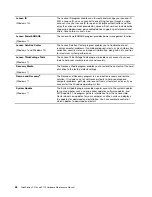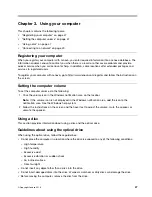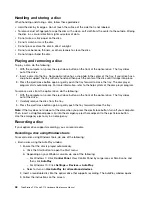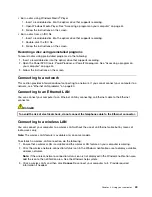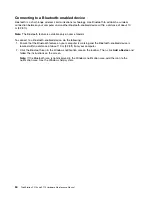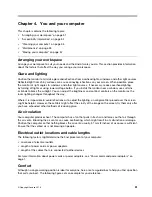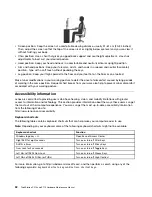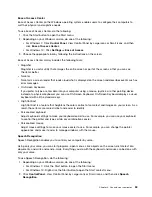
• Intel
®
Standard Manageability (ISM)
Intel Standard Manageability is hardware and firmware technology that builds certain functionality
into computers in order to make them easier and less expensive for businesses to monitor, maintain,
update, upgrade, and repair.
• Intel Active Management Technology (AMT)
Intel Active Management Technology is hardware- and firmware-based technology that makes computers
easier and less expensive for businesses to monitor, maintain, update, upgrade, and repair.
• Intel Rapid Storage Technology enterprise (RSTe)
Intel RSTe is a device driver that provides support for SATA or SAS Redundant Array of Independent
Disks (RAID) 0, 1, 5, and 10 arrays on specific Intel chipset system boards to enhance hard disk drive
performance.
• Preboot Execution Environment (PXE)
The Preboot Execution Environment is an environment to start computers using a network interface
independent of data storage devices (such as the hard disk drive) or installed operating systems.
• System Management (SM) Basic Input/Output System (BIOS) and SM software
The SM BIOS specification defines data structures and access methods in a BIOS that allows a user or
application to store and retrieve information specific about the computer in question.
• Wake on LAN (WOL)
Wake on LAN is an Ethernet computer networking standard that allows a computer to be turned on
or woken up by a network message. The message is usually sent by a program running on another
computer on the same local area network.
• Windows Management Instrumentation (WMI)
Windows Management Instrumentation is a set of extensions to the Windows Driver Model. It provides an
operating system interface through which instrumented components provide information and notification.
Security features
• Ability to enable and disable a device
• Ability to enable and disable USB connectors individually
• Antivirus program
• Computrace Agent software embedded in firmware
• Cover presence switch (also called intrusion switch)
• BIOS passwords and Windows accounts to deter unauthorized use of your computer
• BIOS guard
• Finger authentication (available on some models)
• Firewalls
• Startup sequence control
• Startup without keyboard or mouse
• Support for a computer cover lock
• Support for a Kensington-style cable lock
• Support for a padlock
• Trusted Platform Module (TPM)
For more information, see Chapter 5 “Security” on page 59.
43
Summary of Contents for ThinkStation P710
Page 1: ...ThinkStation P510 and P710 Hardware Maintenance Manual Machine Types 30B4 30B5 30B6 and 30B7 ...
Page 14: ...8 ThinkStation P510 and P710 Hardware Maintenance Manual ...
Page 18: ...12 ThinkStation P510 and P710 Hardware Maintenance Manual ...
Page 19: ...1 2 Chapter 1 Read this first Important safety information 13 ...
Page 20: ...1 2 14 ThinkStation P510 and P710 Hardware Maintenance Manual ...
Page 25: ...1 2 Chapter 1 Read this first Important safety information 19 ...
Page 26: ...1 2 20 ThinkStation P510 and P710 Hardware Maintenance Manual ...
Page 29: ...Chapter 1 Read this first Important safety information 23 ...
Page 40: ...Figure 5 Major FRUs and CRUs 34 ThinkStation P510 and P710 Hardware Maintenance Manual ...
Page 64: ...58 ThinkStation P510 and P710 Hardware Maintenance Manual ...
Page 70: ...64 ThinkStation P510 and P710 Hardware Maintenance Manual ...
Page 96: ...90 ThinkStation P510 and P710 Hardware Maintenance Manual ...
Page 104: ...98 ThinkStation P510 and P710 Hardware Maintenance Manual ...
Page 198: ...192 ThinkStation P510 and P710 Hardware Maintenance Manual ...
Page 202: ...196 ThinkStation P510 and P710 Hardware Maintenance Manual ...
Page 204: ...198 ThinkStation P510 and P710 Hardware Maintenance Manual ...
Page 208: ...202 ThinkStation P510 and P710 Hardware Maintenance Manual ...
Page 212: ...206 ThinkStation P510 and P710 Hardware Maintenance Manual ...
Page 216: ...210 ThinkStation P510 and P710 Hardware Maintenance Manual ...
Page 219: ......
Page 220: ......


















